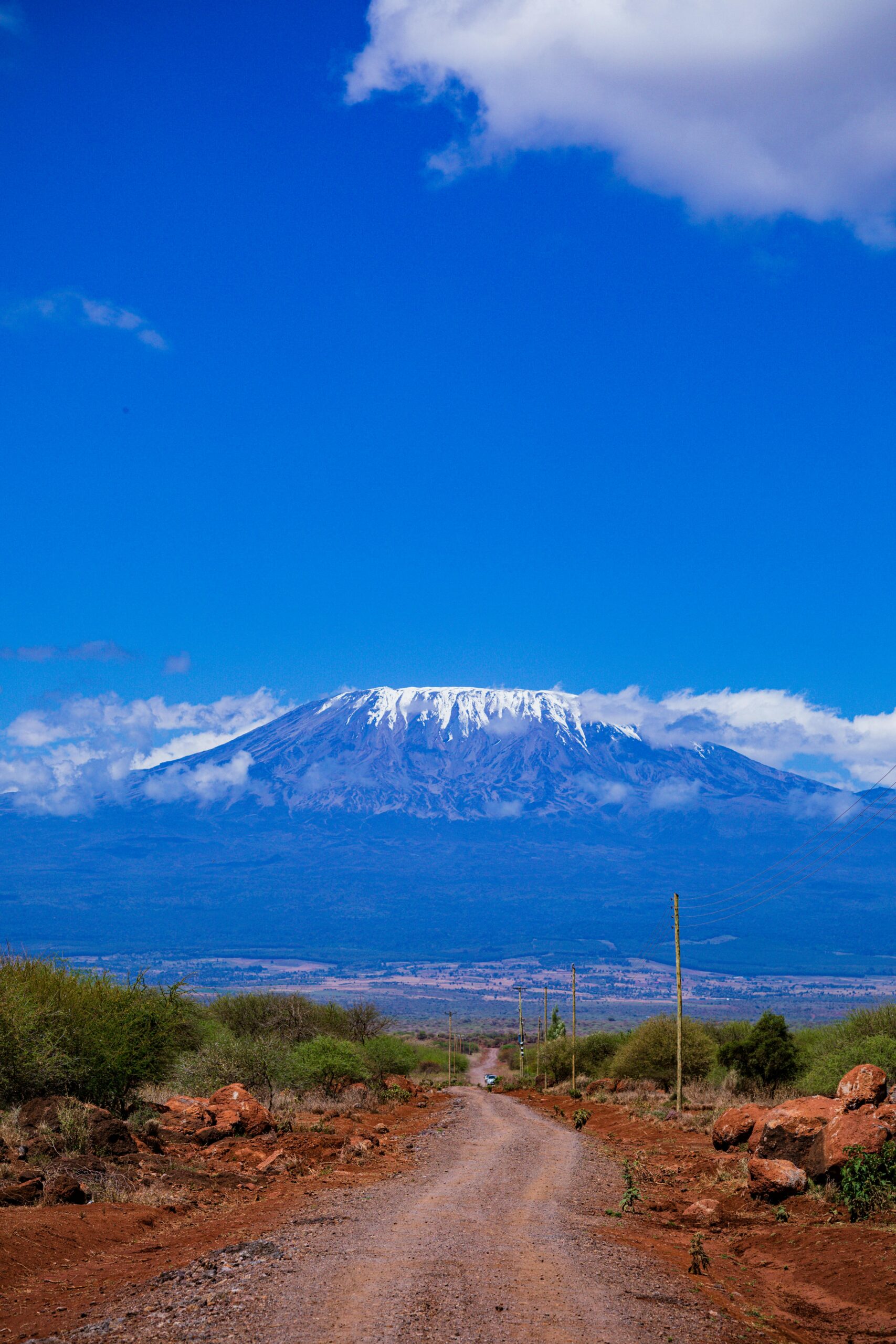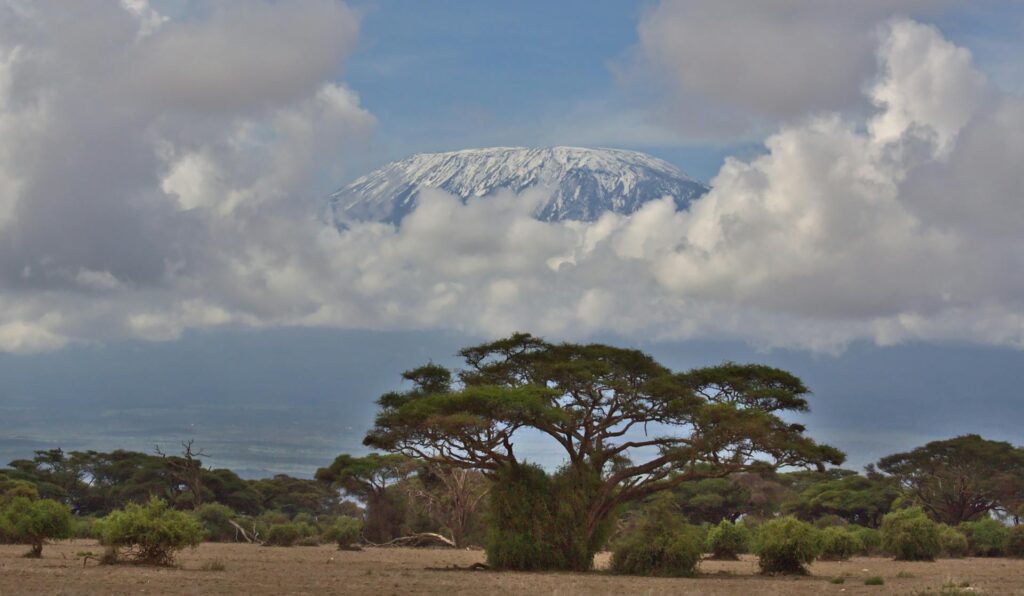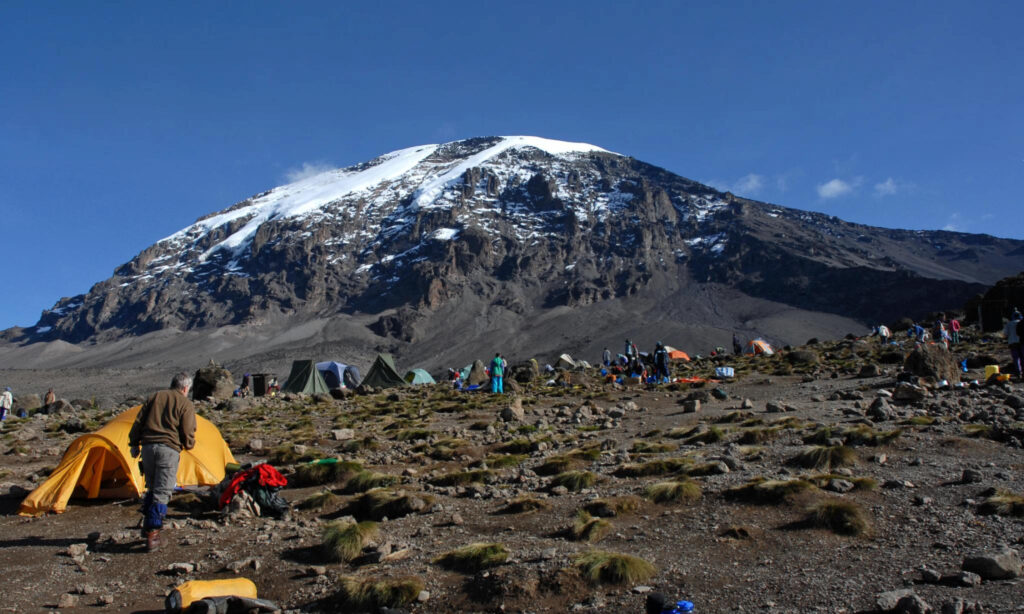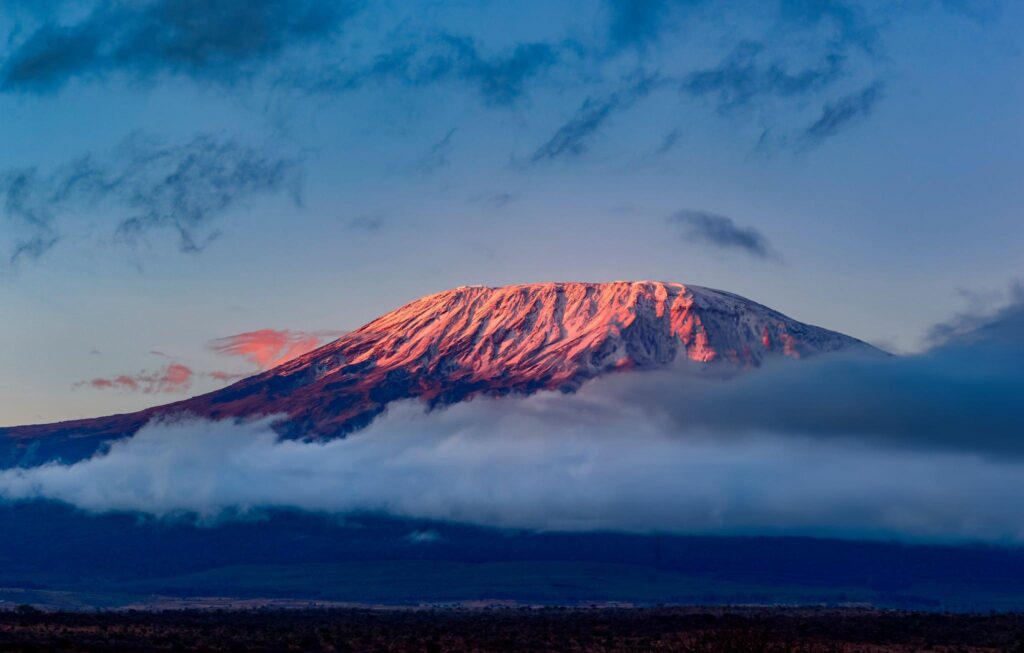
Take a hike and wAnder through the woods
Nestled in the heart of Tanzania, Kilimanjaro National Park is a realm where the ordinary dissolves into the extraordinary. This UNESCO World Heritage Site cradles the largest free-standing volcanic mass on Earth—the iconic Mount Kilimanjaro. Rising from the African plains, this majestic mountain stands in splendid isolation, its snow-capped peak piercing the heavens at an awe-inspiring 5,895 meters (19,341 feet) above sea level.
- The Volcanic Wonder: Mount Kilimanjaro is a geological marvel. Its three main volcanic peaks—Kibo, Mawenzi, and Shira—loom over the surrounding savannah, casting an otherworldly silhouette. The mountain’s snow-capped crown and glaciers make it a superlative natural phenomenon.
- Vegetation Zones: As you ascend, Kilimanjaro reveals its five distinct vegetation zones:
- Lower Slopes: Verdant forests teem with life, from elusive mammals to vibrant bird species.
- Montane Forest: A lush, mystical realm where ancient trees whisper secrets.
- Heath and Moorland: Hardy plants cling to rocky terrain, and giant lobelias thrive.
- Alpine Desert: Stark and windswept, this zone prepares you for the summit.
- The Summit: A lunar landscape of ice and rock, where the air is thin and the views are boundless.
- Rich Biodiversity: Kilimanjaro’s slopes harbor a treasure trove of wildlife. Elephants, leopards, buffalo, and countless bird species call this place home. Many of these creatures are endangered, making their preservation crucial.
- Tourism and Adventure:
- Trekking Routes: Six well-trodden paths lead intrepid adventurers to Kilimanjaro’s summit. Each route offers a unique perspective and challenges.
- Shira Plateau: Embark on day or overnight hikes across this high-altitude plateau, surrounded by breathtaking vistas.
- Nature Trails: Explore the lower reaches, where guided nature trails reveal hidden wonders.
- Trout Fishing: Cast your line in pristine mountain streams.
- Chala Crater Lake: Venture to the southeastern slopes and discover the mesmerizing Chala crater lake.
Tourism in Kilimanjaro National Park is carefully managed to preserve its pristine beauty and protect its delicate ecosystems. Here are some ways tourism is conducted:
- Guided Treks: Experienced guides lead trekkers along established routes, ensuring safety and minimizing environmental impact.
- Sustainable Practices: Visitors are encouraged to follow Leave No Trace principles, respecting the fragile environment.
- Wildlife Viewing: Safaris within the park allow travelers to witness elephants, antelope, and other wildlife.
- Cultural Experiences: Engage with local communities and learn about their traditions and way of life.
Kilimanjaro National Park invites you to embark on a journey where the sky meets the earth—a pilgrimage to the roof of Africa that leaves an indelible mark on your soul. 🌿🏔️🌍





